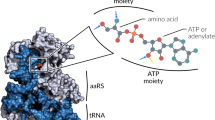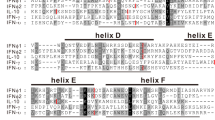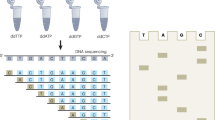Abstract
Nucleotide sequencing of cloned cDNA can lead to rapid and precise prediction of the primary amino acid sequence of gene products, but it cannot establish such post-translational modifications as the existence and arrangement of disulphide bonds. For example, the complete sequences of at least one fibroblast1 and seven2–4,12 leukocyte interferon genes are already known, but knowledge derived from analysis of the proteins is confined to information on the N-termini5–8 and some tryptic fragments9. The presence of at least one disulphide bond in leukocyte interferon is suggested by that molecule's sensitivity to reducing agents10. In addition, comparison of all leukocyte interferon gene sequences so far reported indicates four highly conserved cysteines. One of these genes has been engineered for efficient direct expression in Escherichia coli4 and we have purified the gene product, leukocyte interferon A (IFN-αA, Fig. 1) from bacterial extracts to a single species of molecular weight (MW) 19,40013. I report here the determination of the disulphide bonds of the purified protein by analysis of tryptic fragments. The results indicate that Cys 1 is bonded to Cys 98, and Cys 29 is bonded to Cys 138.
This is a preview of subscription content, access via your institution
Access options
Subscribe to this journal
Receive 51 print issues and online access
$199.00 per year
only $3.90 per issue
Buy this article
- Purchase on Springer Link
- Instant access to full article PDF
Prices may be subject to local taxes which are calculated during checkout
Similar content being viewed by others
References
Taniguchi, T., Ohno, S., Fujii-Kuuriyama, Y. & Muramatsu, M. Gene 10, 11–15 (1980).
Mantei, N. et al. Gene 10, 1–10 (1980).
Streuli, M., Nagata, S. & Weissman, C. Science 209, 1343–1347 (1980).
Goeddel, D. V. et al. Nature 287, 411–416 (1980).
Zoon, K. C. et al. Science 207, 527–528 (1980).
Taira, H. et al. Science 207, 528–530 (1980).
Knight, E. Jr., Hunkapiller, M. W., Korant, B. D., Hardy, R. W. F. & Hood, L. E. Science 207, 525–526 (1980).
Levy, W. P., Shively, J., Rubinstein, M., Del Valle, U. & Pestka, S. Proc. natn. Acad. Sci U.S.A. 77, 5102–5104 (1980).
Allen, G. & Fantes, K. H. Nature 287, 408–411 (1980).
Mogensen, K. E. & Cantell, K. J. gen. Virol. 22, 95–103 (1974).
Bennett, H. P. J., Browne, C. A., Goltzman, D. & Solomon, S. in Proc. 6th American Peptide Symp. (eds Gross, E. & Meienhofer, J.) 121–124 (Pierce, Rockford, 1979).
Goeddel, D. V. et al. Nature (in the press).
Wetzel, R. et al. J. Interferon Res. (in the press).
Author information
Authors and Affiliations
Rights and permissions
About this article
Cite this article
Wetzel, R. Assignment of the disulphide bonds of leukocyte interferon. Nature 289, 606–607 (1981). https://doi.org/10.1038/289606a0
Received:
Accepted:
Issue Date:
DOI: https://doi.org/10.1038/289606a0
This article is cited by
-
Phylogenetic Analysis of Bovine Interferon α
National Academy Science Letters (2015)
-
Physicochemical and antigenic properties of synthetic fragments of human leukocyte interferon
Nature (1981)
-
The structure of eight distinct cloned human leukocyte interferon cDNAs
Nature (1981)
-
A single amino acid change in IFN-β1 abolishes its antiviral activity
Nature (1981)
Comments
By submitting a comment you agree to abide by our Terms and Community Guidelines. If you find something abusive or that does not comply with our terms or guidelines please flag it as inappropriate.



